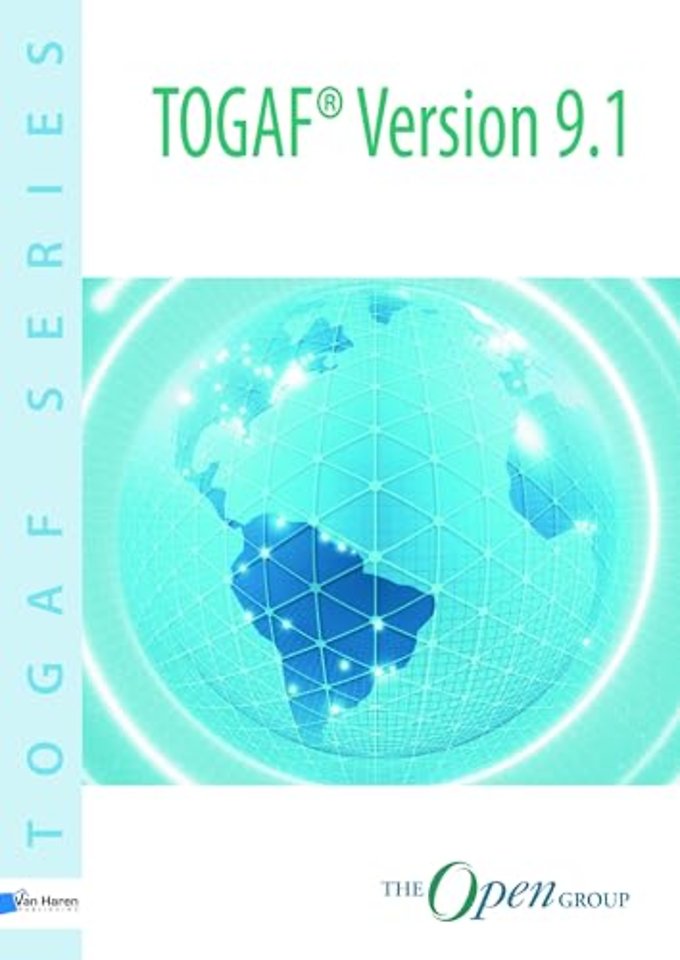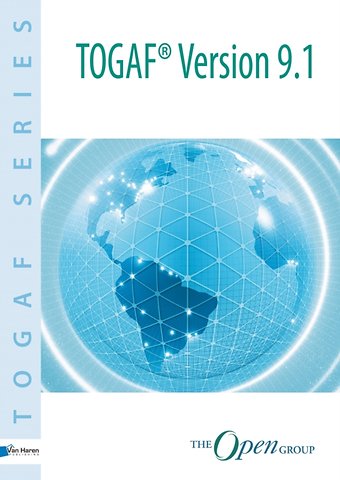



The Open Group works with customers and suppliers of technology products and services, and with consortia and other standards organizations to capture, clarify, and integrate current and emerging requirements, establish standards and policies, and share best practices. Our standards ensure openness, interoperability, and consensus.
Meer over The Open GroupTOGAF Version 9.1
Samenvatting
TOGAF is a framework - a detailed method and a set of supporting tools - for developing an enterprise architecture, developed by members of The Open Group Architecture Forum.
TOGAF Version 9.1 is a maintenance update to TOGAF 9, addressing comments raised since the introduction of TOGAF 9 in 2009. It retains the major features and structure of TOGAF 9, thereby preserving existing investment in TOGAF, and adds further detail and clarification to what is already proven.It may be used freely by any organization wishing to develop an enterprise architecture for use within that organization (subject to the Conditions of Use).
Specificaties
Inhoudsopgave
1. Introduction
2. Core Concepts
3. Definitions
4. Release Notes
Part 2: Architecture development method (ADM)
5. Introduction
6. Preliminary phase
7. Phase A: Architecture vision
8. Phase B: Business architecture
9. Phase C: Information systems architectures
10. Phase C: Information systems architectures - data architecture
11. Phase C: Information systems architectures - applications architecture
12. Phase D: Technology architecture
13. Phase E: Opportunities and solutions
14. Phase F: Migration planning
15. Phase G: Implementation governance
16. Phase H: Architecture change management
17. ADM architecture requirements management
Part 3: ADM Guidelines and Techniques
18. Introduction
19. Applying iteration to the ADM
20. Applying the ADM across the Architecture Landscape
21. Security architecture and the ADM
22. Using TOGAF to define & govern SOAs
23. Architecture principles
24. Stakeholder management
25. Architecture patterns
26. Business scenarios and Business goals
27. Gap Analysis
28. Migration planning techniques
29. Interoperability requirements
30. Business transformation readiness assessment
31. Risk management
32. Capability-based planning
Part 4: Architecture Content Framework
33. Introduction
34. Content metamodel
35. Architectural artifacts
36. Architecture deliverables
37. Building blocks
Part 5: Enterprise Continuum and Tools
38. Introduction
39. Enterprise continuum
40. Architecture partitioning
41. Architecture repository
42. Tools for architecture development
Part 6: Togaf Reference models
43. Foundation architecture: technical reference model
44. Integrated information infrastructure reference model
Part 7: Architecture Capability Framework
45. Introduction
46. Establishing an architecture capability
47. Architecture board
48. Architecture compliance
49. Architecture contracts
50. Architecture governance
51. Architecture maturity models
52. Architecture skills framework
Part 8: Appendices
A. Glossary of supplementary definitions
B. Abbreviations
Index
List of figures
Anderen die dit kochten, kochten ook
Net verschenen
Rubrieken
- aanbestedingsrecht
- aansprakelijkheids- en verzekeringsrecht
- accountancy
- algemeen juridisch
- arbeidsrecht
- bank- en effectenrecht
- bestuursrecht
- bouwrecht
- burgerlijk recht en procesrecht
- europees-internationaal recht
- fiscaal recht
- gezondheidsrecht
- insolventierecht
- intellectuele eigendom en ict-recht
- management
- mens en maatschappij
- milieu- en omgevingsrecht
- notarieel recht
- ondernemingsrecht
- pensioenrecht
- personen- en familierecht
- sociale zekerheidsrecht
- staatsrecht
- strafrecht en criminologie
- vastgoed- en huurrecht
- vreemdelingenrecht





